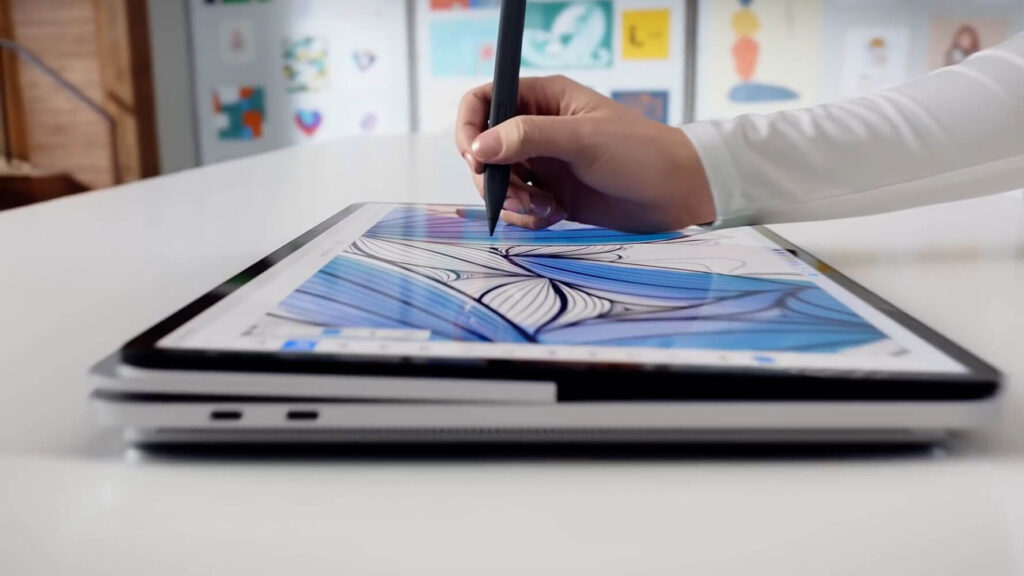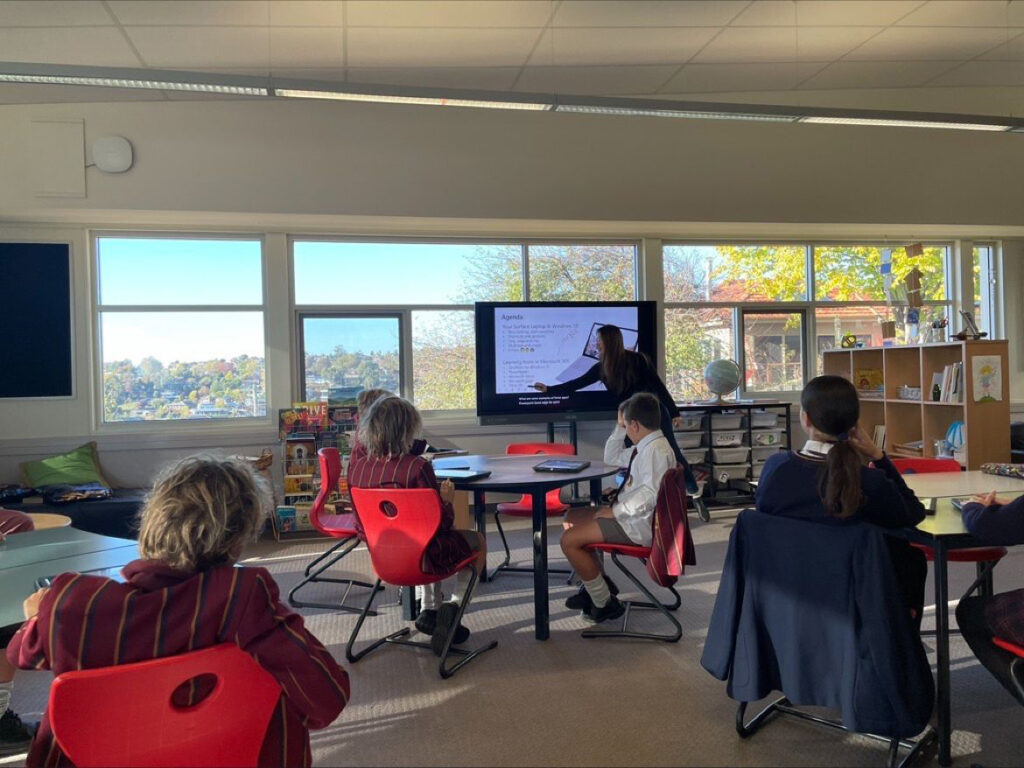Personal Touch
“The beauty of technology is that it’s an invaluable asset – it gives us access to the rest of the world and the wealth of information that the world has to offer (giving students and teachers constant updates and refreshed information at their fingertips), which we wouldn’t get in terms of our typical or traditional resources like textbooks.”
“Equally important are the tech devices themselves, which are giving students the ability to access information based on the way they need to learn – offering personalised devices that can increase text size, for example, and change colours to suit each and every student’s personal and individualised learning needs and styles.”
Indeed, technology selection can be a complex and time-consuming process so it’s vitally important the devices match individual needs and “suit the end user in the way in which they learn and create,” Connie said.
“Students who have dyslexia, for example, can leverage technology in the learning tools within Microsoft 365 to support their reading. At the same time, people with visual impairments or hearing impairments can leverage closed captioning and tools like dictate, read aloud and immersive reader to support their learning,” she said.
“If a student doesn’t learn well by typing, then you’d want to have an inking feature, for example, which is a digital pen that tracks your handwriting and drawings and digitises them on the fly. This offers yet another productive and inclusive way of learning.
“Inking, for its part, helps to essentially enable the end user to work the way that they want to. They’re not inhibited by their technology. Rather, they’re empowered by it.”
Under the Surface
So, what’s happening in the classroom arena? A popular item with students and teachers alike is the Surface technology, according to Connie, who said students can replicate the same inking experience through the Surface Pen and the surface device.
Part of the larger appeal is the fact the technology is versatile and offers customisation, which makes the range attractive to the school environment, Connie said.
“There’s no one size fits all approach,” she said. In fact, there’s an ecosystem of technology from the traditional laptops to desktops PCs to interactive whiteboards and a host of 2-in-1 tablets.
Another important feature of the Surface technology comes on the security front, Connie said, explaining the inclusion of the device firmware configuration interface.
“This functionality enables schools to lock down the USB ports, the cameras, headphone jacks, things like that, so people can’t steal data with a USB stick by just passing by.”

Moving beyond price
But there’s more to consider. Certainly, setting value, not price is crucial in the school system – and Connie said the selection process doesn’t always come down to price.
“What I’ve found from my experience in the school system is that it’s not always about the price point. It’s not just something that fits the school budget – it’s more about getting the right value (and right functionality) for the money.”
And scooping up devices with different modes of use is a good way to do just that, Connie explained.
“It needs to be a device that enables multimodal usage providing flexibility. Being flexible in terms of a 2-in-1 device, for example, so that students are comfortable with typing essays and reports, and having a touch screen that’s also pen-enabled will give students the ability to ink, to create mind maps, draw their ideas onto the screen and enable them to be creative without the restriction of the device’s form factor.
Meanwhile, Connie said other top purchasing considerations include:
- Importance of all-day battery life
- Reliable connectivity is crucial
- Compatibility with latest software and operating systems
- Identifying necessary accessories
- Strong security measures to lock down devices

Specs to consider
Indeed, all schools need to decipher the latest specifications – or lean on a technology support partner (with a robust warranty system) to do the hard yards for them.
Eyeing the unique specifications for each school category, Connie offered up some general pointers, namely:
‘For K-6: when you’re speaking about power and processing, it’s easier because they’re not using the heavy programs and applications that some of the Year 11 and 12 require for graphic design and so forth. So for them, they need something like an Intel Processor (i3/i5); 8GB of RAM and a minimum of 128GB of storage.”
In the higher school bracket, meanwhile, Connie said many students – and teachers – need more processing power and better graphics capabilities (dedicated graphics cards for more grunt).
“In high schools, the general usage and 128GB of storage – or 256GB – is sufficient, but then you have teachers who might be doing a bit more workload than the students and they’re looking at something with more processing power like an i7 and 16GB of RAM and 512GB of storage. They can also leverage cloud storage, which is one terabyte with Microsoft OneDriver.
“They might also require more programs and applications to be installed onto their devices and may require more storage. Music teachers, for example, who are creating a lot of music work will need extra RAM and extra local storage.”
In addition to the specs, Connie said schools also need to be mindful of the ‘wear and tear’ each device has to potentially endure.
“The devices need to be is protectable – not only the inside is protectable, but the outside. We all know how rough students can be with technology, so ensuring that there are rugged cases available for the device that they choose, is equally so important.”
In conclusion, choosing the right device specifications is critical for schools, and it’s essential to have a technology support partner with a robust warranty system or a knowledgeable team to help schools navigate the latest specifications.
Need to make even more decisions or consider other requirements? By keeping these factors in mind, schools can ensure they provide students and teachers with the necessary tools to enhance the learning experience and prepare students for the future. Contact the ASI Solutions Microsoft Specialist team to help you elevate your experience through technology.


